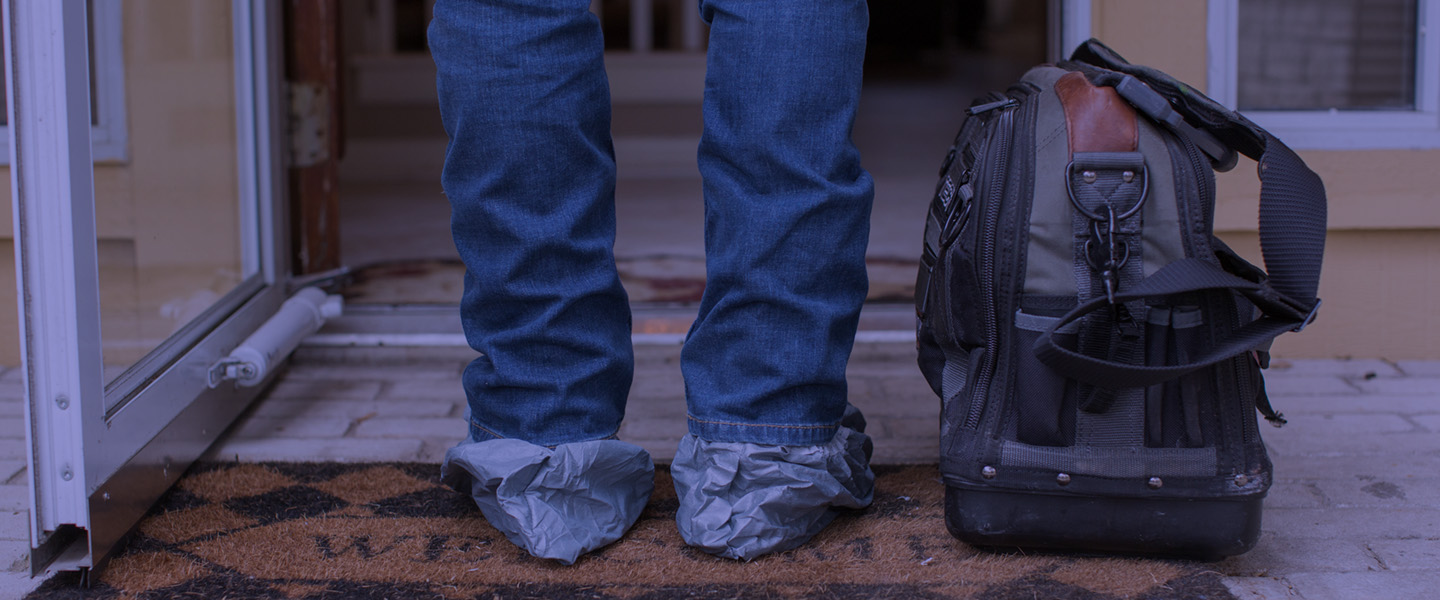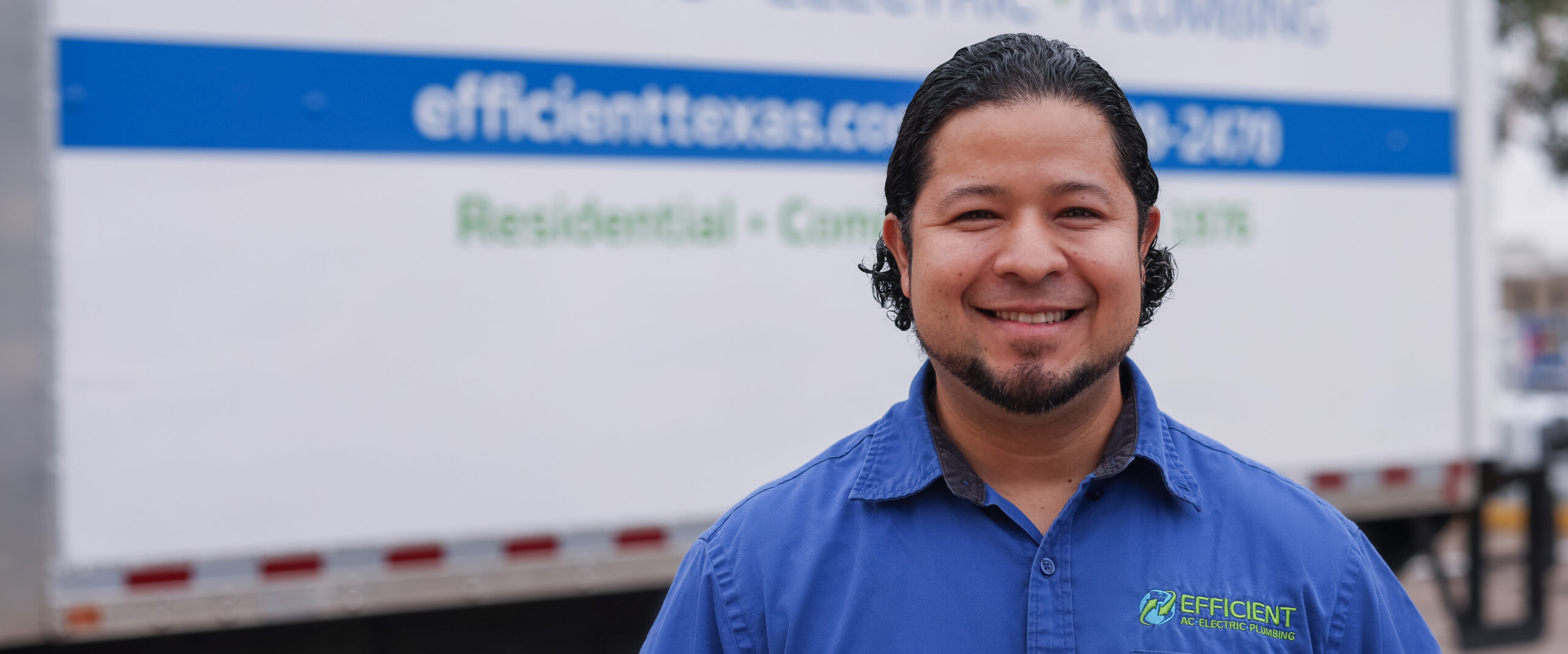0% for 36 Months or 10% off a New AC. Learn More >
Whole Home Air Purifier Installation in Austin, TX
Whole home air purifiers are the most effective way to remove contaminants in the entire indoor environment. Portable units of the same technology will not be able to circulate sufficient air to cover even small homes. They are limited to local areas at best, and even as such, air migrations from the home HVAC system, open doors and leaks negate much of the benefit.
However, there are a ton of whole home air purifier products, technologies – and, unfortunately, gimmicks – on the market. We created this guide to help you understand the options.
Table of Contents
- How Do Whole Home Air Purifier Systems Work?
- What Are the Benefits of a Whole Home Air Purifier?
- What Are the Drawbacks of a Whole Home Air Purifier?
- Choosing a Whole Home Air Purifier System
- Products To Consider / Owner Favorites
- How Much Does Whole Home Air Purifier Installation Cost?
- What Maintenance Is Required for Whole Home Air Purifiers?
- Efficient’s Approach to Whole Home Air Purifier Installation
- What About Portable Devices?
- Key Takeaways
How Do Whole Home Air Purifier Systems Work?
This is the question of the day. There are many types and combinations of air purifier systems. In general, these individual functions can be classified into five general categories that are explored below: filtration (MERV, HEPA), absorption (carbon), ultraviolet (UV) light, ionization and ozone generation. High-end specialty units, such as IQAir, use combinations of these general technologies.
- Filtration (MERV, HEPA) – Improving filtration typically involves installing a new filter box, such as AprilAire or Honeywell, at the indoor unit with a MERV 7-8 filter. Filter racks are designed for 1” thick filters, which are the least desirable. We recommend a minimum of 2” filter boxes, with 4” or 5” preferable, if there is room, for the lowest pressure drop and longest filter life. Increasing filtration efficiency (say from MERV 8 to MERV 11 or 13) will reduce particles; however, doing so with a 1” filter will result in high pressure drop across the filter that reduces machine performance and energy efficiency – perhaps to the point of freezing coils. We do not recommend above MERV 13, including HEPA, as most HVAC units cannot handle the pressure drop. A specially designed solution is needed for these. Electrostatic filters are another option, and there are some made by the major equipment manufacturers. Rather than sift particles through a media filter, they attract particles through a charge. They also work well; however, as particles accumulate, they become less effective. Strict adherence to maintenance is a must, and many people – if not most – do not do it.
- Absorption (Carbon) – Absorption is not typically practical for home use. In standard residential installations, carbon filtration can eliminate some odors; however, contact time is often so short that the results are marginal at best. It is more of a selling point. Large bed carbon filtering systems work well; however, a true filled carbon bed filter rack with replaceable carbon is a larger assembly and very messy to service. It must be installed in the airflow and requires lots of space.
- UV Lights – UV lights can be effective at eliminating growth on surfaces, in particular HVAC indoor evaporator coil assemblies, where they are typically installed. In most cases, it is an easy retrofit and does not require adding boxes or changing ductwork. However, keep in mind that they are not effective in killing airborne growth, as the contact time of air passing through the machine at a few hundred feet per minute is negligible.
- Ionization – Ionization products, such as the REME HALO, are very effective at reducing airborne and surface bacteria, viruses, odors and mold spores. These devices produce hydrogen peroxide plasma that cleans the air. The plasma’s electrical charge causes tiny particles like dust and dander to stick together. This makes them easier for the HVAC filter to capture. The ionized hydrogen peroxide also breaks down and destroys contaminants like bacteria, viruses, mold spores, odors and VOCs. A side effect for these units is a small amount of ozone production, typically well below government standards. Some versions also claim zero ozone production, as it is not measurable. One advantage of these products is relatively low cost (annualized across element life, two to five years) and low maintenance. The REME HALO is installed in the supply air (outgoing air from the indoor unit to the rooms) plenum, usually without duct modification. It is designed to be wired to operate when the machine blower motor is running.
- Ozone Generators – Ozone levels deemed safe by the US government are not effective in killing biologicals and do not remove pollutants. Obviously, no one should recommend unsafe levels. For this reason, Efficient does not recommend pure ozone generation for air purification. However, it is fine for water (swimming pools).
What Are the Benefits of a Whole Home Air Purifier?
Whole home air purifiers can be very effective in reducing allergens and smells. For those who suffer from seasonal or constant allergies, they can make a large difference. Remember, home is where you sleep, and this is a significant amount of time to get relief. The worse the allergy sufferer’s symptoms, the more these purifiers make sense. Keep in mind that they rely on air circulation, so they become more effective over multiple air exchanges. For example, smoking or cooking smells may take hours to remove or reduce nearly entirely. For continuous smokers (and bacon cookers, ha), they will not address the source. Combination products and ionizers will knock the smells down faster. Typically, they do not produce noise, but some devices can emit a weak ozone-like smell at times.
What Are the Drawbacks of a Whole Home Air Purifier?
Drawbacks are mainly upfront cost and cost to maintain. Beyond a simple air filter, these are additional devices, and with every device comes requirements to keep it at optimal performance. For electronic devices, there is a minimal energy cost, similar to running one LED lamp, which will not make a noticeable difference on electric bills. For some electronic products, a minor amount of ozone production is also a consideration for some people.
Choosing a Whole Home Air Purifier System
Every property and owner is different. The real question is: What problem are you trying to solve, and does the solution fit it? General clean air and filtration are different from addressing specific allergies or illnesses. While the starting point is a good media filter (MERV 7-8 filtering all air traveling into the HVAC system), the main purpose for this filter is to protect the system from accumulation. Sensitivity to dust would lead to a higher efficiency filter (MERV 11-13), while sensitivity to molds and other allergens would lead to selecting advanced technology to remove or kill biologicals. The size of property generally leads to the number of purification units, with many sized appropriately at one per HVAC unit.
Products To Consider
- 2” EZ Filter Base – entry level and better than 1” filters with longer replacement cycle
- 4” or 5” Filter Base (Honeywell, AprilAire, Carrier) – preferred
- Electrostatic Air Cleaner (Carrier Electronic Filter, Trane CleanEffects) – specialty
- Air Ionizer (REME HALO) – very effective
- IQAir – large filter box, low maintenance frequency but very expensive
Owner Favorites
Owner George Drazic: “My personal favorite choice includes a large media filter (up to-one year replacement frequency depending on environment) and the REME HALO (with a 5-year LED element). Of course I like minimal maintenance requirements and products that work well. Since I am an allergy sufferer, mold in particular, I find that this solution works for me. We will find a solution that works for you and your property as well.”
How Much Does Whole Home Air Purifier Installation Cost?
Costs for whole home air purifier installation and maintenance vary. When replacing your HVAC system, Efficient will quote a new filter base, 4” or 5” if there is room for the unit. The incremental cost in the quote is minimal, as we are already replacing the system. Costs per HVAC system range:
- ($) Filter bases: A few hundred dollars
- ($$) REME HALO: $1,000-$1,500 (price varies depending on selection and other work done)
- ($$$) Electronics/electrostatics, IQAir: several thousand dollars
What Maintenance Is Required for Whole Home Air Purifiers?
All machines need maintenance, and air purifiers are no exception. Filters must be changed, electronic/electrostatic filters must be assessed and cleaned – all these at least once if not multiple times a year. Ionizers will have a 2-5 year life, and when installed correctly, do not need maintenance until the element replacement is due. Warranties vary by product and are generally longer than one year, often up to five years.
Efficient’s Approach to Whole Home Air Purifier Installation
Efficient will make recommendations for air purification, typically as a part of a request or during time for ductwork replacement or repair. When already performing major work, air purification is less expensive. We are already there, and the system is partly or fully removed. Our replacement specialist will discuss your needs and concerns, then recommend solutions. We do not just offer the most expensive alternatives first. We like value-driven solutions that have minimal maintenance.
What About Portable Devices?
It is tempting to just buy a portable room air purifier, plug it in and walk away. It is inexpensive, and the investment risk if it does not work is minimal. That said, it rarely works enough to make a difference. Often the room air changes are negligible, and when the room is larger or other spaces are connected, there will be no benefit other than psychological.
Whole Home Air Purifiers: Key Takeaways
- If you don’t have any air quality sensitivities, a good air filter and filter box may be adequate.
- Consider other sources of pollution in your property. Open water, roof leaks, ductwork leaks, pet messes, and high humidity (oversized HVAC equipment) can affect air quality and should be assessed directly. Working on these issues may eliminate the need for added air purification.
- Consider making the investment when other major work is done, especially system replacements. Efficient discounts these products at replacement time, as it is less work for us. This is the time for a holistic approach to your air comfort, air quality and efficiency.
- Lean toward more standard brands with good reputations. Replacement items will be available when needed for future service. Avoid devices that are built in “someone’s garage.” A few major brands are mentioned in this guide.
- Do the maintenance – either yourself, or contract it with your HVAC provider. Efficient’s maintenance charges are very competitive, as we want to encourage maintenance to help extend the life of your system.
If you’d like to discuss whole home air purifier options for your property, give us a call at 512-501-2275 or fill out our quick contact form.

